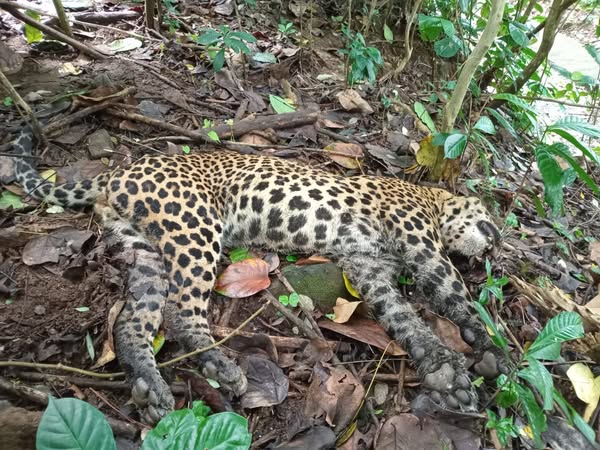- The recent arrest of suspected poachers with a skinned leopard carcass inside a national park in Sri Lanka has raised alarm over possible targeted poaching for meat or body parts.
- Conservationists warn that leopards may no longer be just accidental victims of snares, but are increasingly being hunted with intent.
- Historical echoes of colonial-era leopard hunting and modern superstitions may be quietly fueling an underground trade, experts say.
- With fewer than 1,000 mature individuals left, every leopard death pushes Sri Lanka’s iconic apex predator closer to extinction.
POLONNARUWA, Sri Lanka — Wildlife conservationists have sounded the alarm that leopard poaching in Sri Lanka is being carried out more systematically than previously thought, following the arrest in early August of a group of suspected hunters carrying a freshly skinned carcass in Maduru Oya National Park.
Conservation activist Sethil Muhandiram says there’s specific demand for skin, teeth, claws and even the flesh of leopards (Panthera pardus). He tells Mongabay this belies the prevailing conventional wisdom, echoed even by some conservation authorities, that leopards aren’t deliberately targeted by poachers in Sri Lanka, and that their killing is done opportunistically, when they succumb to traps set for wild boars or deer.
Another common scenario for leopard deaths is retaliatory killing by farmers who blame the big cats for the loss of their livestock, says Muhandiram from LEOPOCON Sri Lanka, a nonprofit that focuses exclusively on the conservation of leopards and their ecosystems. But even then, there’s no intent to profit from the animal’s body parts, he adds.
The recent case in Maduru Oya, and a string of other alleged poaching incidents, strongly suggests there’s more than just opportunistic killing going on, he says.
“There is no reason for poachers to skin and carry an entire carcass unless they see value in it,” Muhandiram says. “This incident points to some other intent, either to extract meat, sell the pelt, or harvest body parts.”
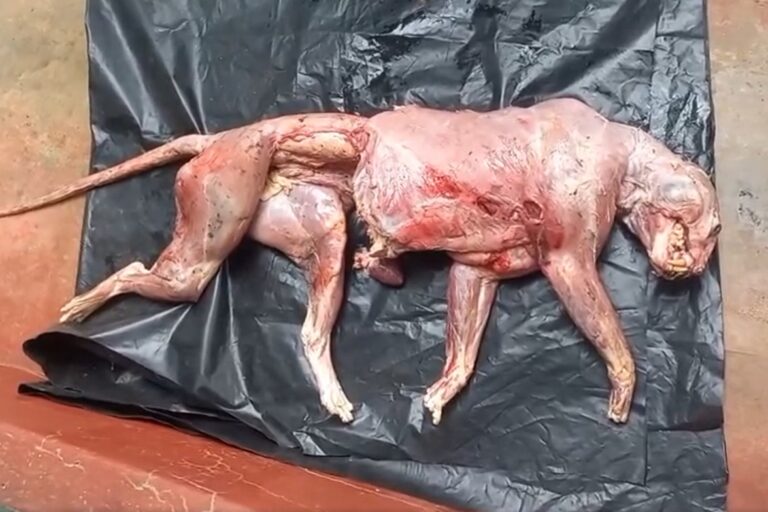
‘A racket exists’
Leopard skin has long been regarded as a status symbol across the species’ range, from Africa to Asia, while leopard teeth are coveted as symbols of power and bravery. In Sri Lanka, there’s also a mythical belief that leopard meat possesses rare medicinal properties, which could be fueling demand in the black market, Muhandiram tells Mongabay.
“One offender caught for killing a leopard admitted he did so to obtain its flesh, clear evidence that such a racket exists. Whether this is part of organized crime or are isolated incidents remains unclear,” he says.
“Sri Lanka may not be part of an international trafficking chain for leopard bone or skin like some parts of India or Africa, but the possibility of small-scale trade or even ritual use of leopard parts cannot be ruled out,” he adds.
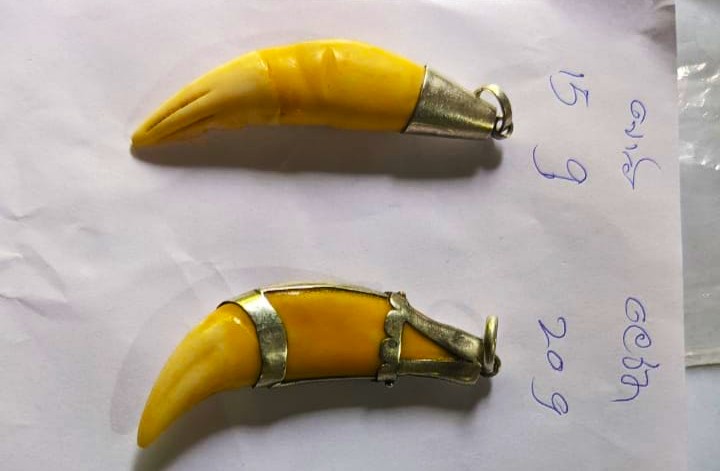
Other researchers and conservationists have also long suspected that the opportunistic explanation may not fully capture the trend. Among them is Rukshan Jayewardene, a veteran conservationist and leopard expert, who says there’s more to the story.
“I’ve always maintained that some leopards are deliberately targeted,” Jayewardene tells Mongabay. “While not widespread like in other leopard range countries, there is still a pattern in Sri Lanka. The trouble is, we have not been able to fully expose or quantify this trend.”
Jayewardene points to repeated incidents where leopards were found not just caught in traps, but with carcasses missing specific body parts like front legs and shoulder muscles – signs suggesting harvesting of body parts rather than simple poaching for meat.
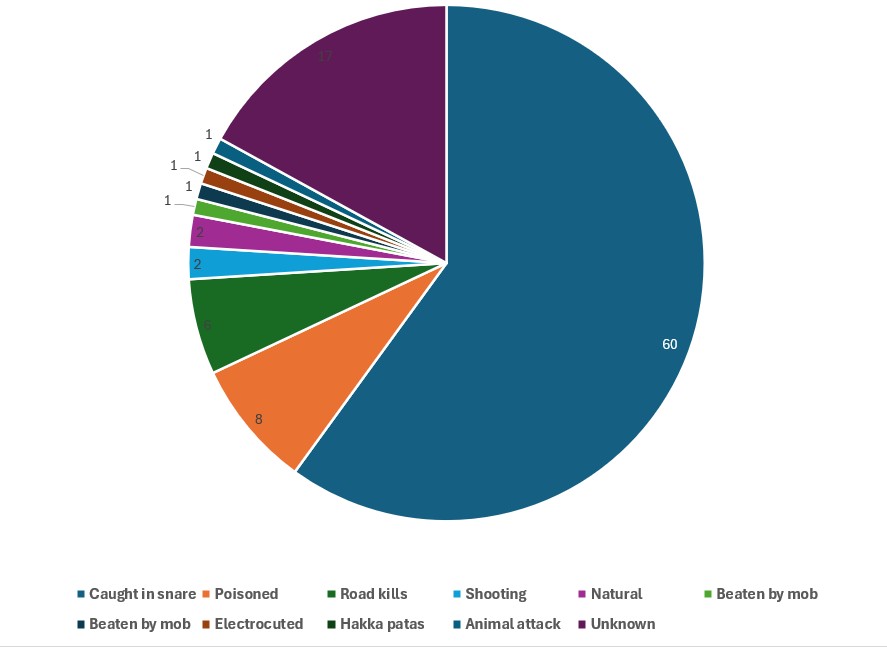
“In the past, there had been leopard skins being confiscated at the airport or from private homes, which suggests targeting, but there is very little information available, and as such, there is currently no available evidence of targeted poaching at scale,” says Andrew Kittle, lead scientist and founding trustee of the Wilderness & Wildlife Conservation Trust (WWCT), a local research and conservation organization. “But this is definitely something that we need to be alert to.”
If poachers specifically target a leopard, then it’s less they’ll leave the carcass behind. Dead leopards accidentally caught in snares set for other animals often do get reported, and some of these incidental killings have resulted in opportunistic harvesting of meat, skin, teeth and claws, Kittle tells Mongabay.
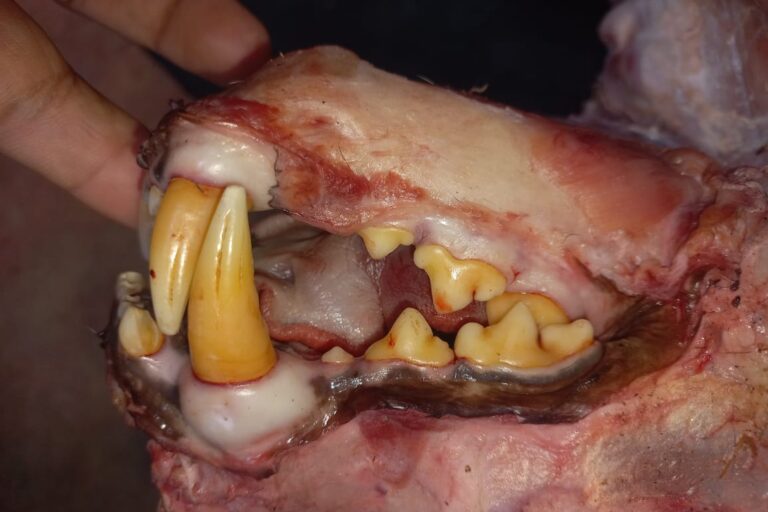
No real wild meat trade
Quantifying instances of leopard killings is difficult as wild meat isn’t sold openly in Sri Lanka, as it is in other leopard range countries.
“We have done surveys about people killing leopards in retaliation for livestock depredation, but the results are hard to verify as some people exaggerate, while there are others that lie to avoid what they think might cause them trouble,” Kittle says, pointing to the difficulty in verifying information relating to leopard deaths.
An analysis by WWCT from 2015 to 2025 revealed at least 100 reported leopard deaths. About three-fifths of these deaths were caused by snares, followed by poisoning, a practice concentrated in cattle-herding regions in the buffer zones of protected areas. Herders usually spray or spill poison over the carcasses of cattle killed by leopards, due to the big cat’s habit of returning to their kill over the following days, Kittle says.
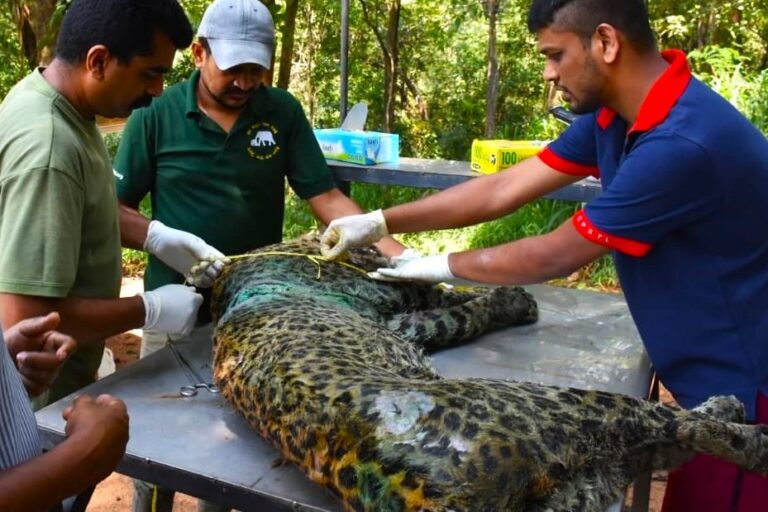
Killed in unprotected areas
A separate analysis of leopard deaths reported to the Department of Wildlife Conservation (DWC) from 2001 to 2023, conducted by a team of researchers at the University of Kelaniya, showed that nearly three in four recorded leopard deaths took place outside protected areas.
“This highlights the increased risks faced by leopards outside designated conservation zones,” says zoologist Hasitha Karavita, one of the researchers. “However, it is also worrying that 24% of leopard deaths occurred in protected regions where some of these deaths are not due to natural causes.”
Their data set puts death by shooting as the No. 3 reason for leopard deaths, accounting for 6.6% of fatalities. Electrocution, explosive-laden bait and collisions with vehicles are recorded as the other main causes of leopard deaths. Some leopards have also been beaten to death by angry mobs, particularly when they’ve been found inside human settlements.
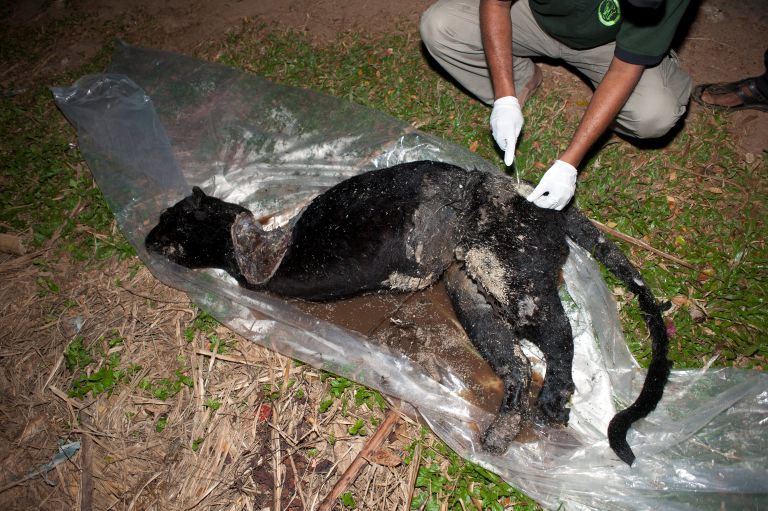
The issue is further complicated by Sri Lanka’s dense and growing rural-forest interface. Leopards, especially young males, often enter forest-adjacent villages in search of food or new territory. This increases both human-wildlife conflict and the likelihood of retaliatory killings by villagers.
“There needs to be better intelligence gathering and community-level education,” Muhandiram says. “We also need harsher penalties for the possession of leopard body parts and more robust monitoring of traditional markets where such items might be traded discreetly, away from the authorities’ eyes.”

Rajika Gamage, an independent researcher who has monitored biodiversity in Sri Lanka’s hilly region for more than two decades, says leopard killings have turned into an organized crime over time. His analysis of incidents across different areas shows a discernible pattern, which he says prompted him to undertake an ongoing in-depth investigation.
“I fear that racketeers may be using research data to target areas where leopards are known to roam frequently,” Gamage tells Mongabay.
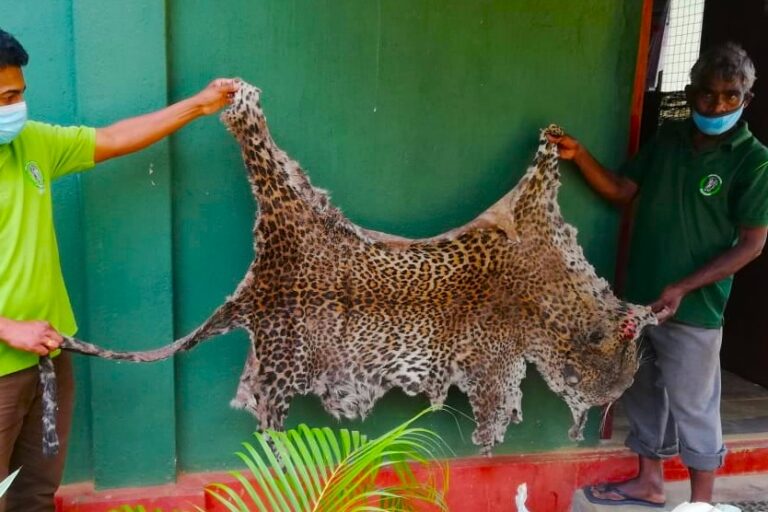
A crisis in the making
Sri Lanka’s leopard population, though not formally assessed in its entirety, is estimated at fewer than 1,000 mature individuals in the wild.
The Sri Lankan leopard (P. p. kotiya) is classified as endangered on the IUCN Red List, which means every death has a sizeable impact.
“We can’t afford to be complacent about this,” Muhandiram says. “The leopard is not just a symbol of the wild, it’s a keystone species whose survival reflects the health of our entire ecosystem.”
As the investigation into the Maduru Oya leopard killing continues, conservationists say they hope it will spark not only accountability, but a deeper look into what might be a hidden crisis — unfolding one snare, one carcass and one pelt at a time.
Banner image: Snares are responsible for 60% of Sri Lanka’s leopard deaths, such as this one. Image courtesy of the Department of Wildlife Conservation (DWC).
Source link
#Conservationists #warn #targeted #poaching #Sri #Lankas #leopard #killings
